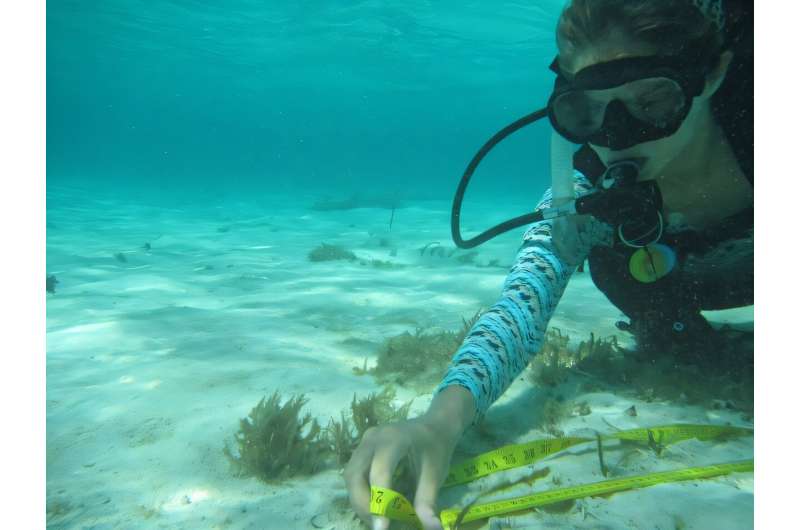
The results of recent research reveal both the vulnerability and the surprising resilience of tropical seagrass, despite the growing threats posed by climate change. Led by Fee Smulders from Wageningen University & Research, international scientists investigated how seagrass responds to warming waters, grazing by sea turtles and fish, and nutrient pollution.
This important ecosystem, which provides food and shelter for fish and turtles, protects our coastlines from erosion, and stores CO₂, is increasingly under pressure due to environmental changes.
Over thirty researchers conducted year-long experiments at ten locations along the western Atlantic coast, from the Caribbean to the United States. At each site, they first created gaps in the seabed and then monitored both above- and below-ground recovery. In addition, half of the plots were enriched with excess nutrients. In this way, they studied how seagrass recovers under varying conditions.
Remarkably, warming seawater was found to even promote the recovery of seagrass in some areas. “Unlike corals, seagrass seems to grow better in slightly warmer waters,” says marine ecologist Fee Smulders. “But we must be cautious with this conclusion: there is a limit. If the water becomes too warm, for instance, during a heat wave, entire seagrass meadows could disappear.”
“Ocean warming is driving herbivores, such as turtles and fish, into more northerly areas, where they eat more seagrass. Another important pressure is that in areas where many turtles or fish graze on seagrass, additional pollution—such as fertilizers from agriculture entering the sea—can severely hinder recovery. “Too many nutrients promote algal growth, which smothers the seagrass,” explains Fee Smulders. “We found that especially the combination of high nutrient and grazing pressure decreases seagrass resilience.”
According to co-author Marjolijn Christianen, who is also affiliated with Wageningen University & Research, the study emphasizes the importance of good water quality for the preservation of seagrass meadows. “Seagrass is of great value—for biodiversity, for climate solutions, and for coastal communities. If we want these ecosystems to persist in a changing climate, we must prevent them from being further burdened.”
The study is published in the journal Global Change Biology.
More information:
Fee O. H. Smulders et al, Temperature Drives Seagrass Recovery Across the Western North Atlantic, Global Change Biology (2025). DOI: 10.1111/gcb.70172


